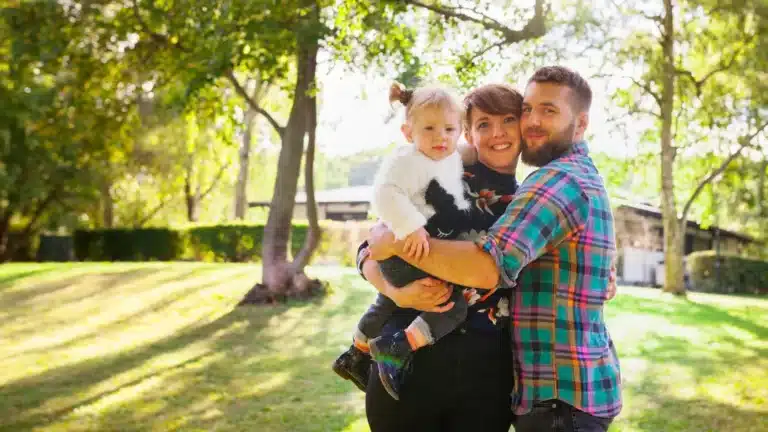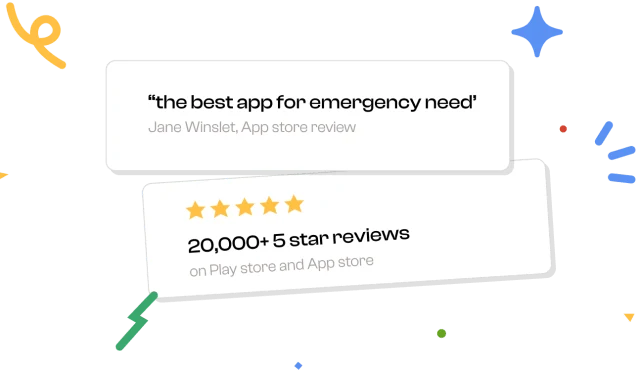Table of Contents
Preparing for a baby is an exciting but financially demanding time. Knowing how much money to save for a baby can help ease the financial burden and ensure you’re ready for immediate and long-term costs.
On average, a baby’s initial life costs between $10,000 and $15,000, covering expenses like diapers, formula, medical costs, and baby gear. After this, parents should calculate the costs of healthcare, daycare, and education.
Having a good savings plan can provide peace of mind. Setting aside emergency funds, calculating future baby-related expenses, and adjusting your budget for any lifestyle changes can help you prepare for this new chapter. Based on your financial situation, start with a realistic savings goal and revisit it regularly making sure you’re financially ready for your growing family.
The Cost of Having a Baby
Parents want to provide the best for their baby and finance is an essential factor. This means budgeting for immediate needs like food, diapers, and clothes, as well as saving for future expenses. However, budgeting can be challenging, especially for new parents trying to plan for both current and future needs.
Research shows that raising a child can cost around $23,000 per year, but this estimate doesn’t include significant expenses like childcare or education. Be sure to factor in local costs for these services, as they can vary widely depending on where you live.
Setting a Savings Goal
While a traditional savings account can be a safe place, it often doesn’t offer much in terms of growth. The average interest rate on a U.S. savings account is just 0.61% APY. If you have $1,000 in the account for a year, you’ll only earn $6.10 interest.
Maximize your savings by considering alternatives like high-yield savings accounts (HYSAs) or money market accounts (MMAs). These typically offer higher interest rates, and many online banks provide competitive options.
For long-term savings, especially for college, custodial accounts like 529 plans, Uniform Gifts to Minors (UGMA), and Uniform Transfer to Minors (UTMA) accounts are also worth considering. These accounts allow parents to save for their child’s future while giving family members the ability to contribute.
Read related blog: Best Way to Save Money for Kids
Budgeting for Medical Costs
National averages show that infant daycare can cost around $16,000 per year per child. While financial experts suggest limiting childcare expenses to 7% to 15% of your household income, recent research reveals that actual costs can reach as high as 32%.
When evaluating the cost, consider a few factors like whether the childcare center provides meals, reduces your grocery bills, offers early childhood education, helps your child get ahead academically, distance of the center from home, and transportation costs.
If traditional daycare isn’t a good fit, consider alternatives like part-time care, nanny shares with other families, or state benefits that could help reduce your childcare costs.
Planning for Baby Gear and Nursery Setup
Investing in high-quality baby gear ensures durability, allowing items to last for years and be passed on to future siblings. This approach saves money and also guarantees your baby has safe and reliable essentials that stand the test of time. Here are a few nursery set-up items that can cost you some money.
- Crib ($120–$850): A crib is a must for your baby’s safety, offering a secure place to sleep.
- Crib mattress ($60–$140): A firm mattress is important for your baby’s support and safety. Avoid soft mattresses that can pose suffocation risks.
- Mattress pad ($14–$130): These pads protect the crib mattress from spills and stains. Waterproof bedsheets are a budget-friendly alternative.
- Bassinet ($50–$260): A bassinet is just an alternative. If you already have a crib, you can skip this.
- Hamper ($20–$60): A separate hamper for your baby’s laundry is recommended, but a simple rope basket can do the job.
- Changing table ($80–$250): A changing pad on a bed is a safer and more cost-effective option.
- Glider or rocker ($189–$600): A rocker can provide support during feedings and bonding moments.
- Bedding and blankets ($24–$190): Soft, essential items for the crib that can also be used for tummy time or as extra layers for comfort.
- Nightlight ($24–$70): Useful for nighttime feedings and diaper changes, with some models doubling as soothing lights.
- Dresser ($80–$500): A dresser is needed to organize your baby’s clothing. Opt for one that can grow with your child making it a long-term purchase.
- Baby monitor ($40–$60): If your baby will sleep in a separate room as they grow, a monitor is important for safety.
Estimating Ongoing Monthly Expenses
Study reveals that the first year of raising a baby can cost upwards of $21,000 and the total cost of raising a child to adulthood can be even higher. While these expenses can add up, your overall budgeting approach doesn’t have to change dramatically. You can continue following the 50/30/20 rule:
- 50% for necessities like bills, loan payments, and baby-related expenses such as childcare, diapers, and formula.
- 30% for discretionary spending or financial wants.
- 20% for savings and debt repayment, particularly high-interest debt like credit cards.
- Using a budget calculator can help assess your financial situation and guide your monthly progress.
Building an Emergency Fund
When saving for emergencies, accessibility is key. The best options for emergency savings are regular savings accounts, high-yield savings accounts (HYSAs), and money market accounts (MMAs). These accounts allow you to easily access your money when you need it most.
HYSAs typically offer higher interest rates than traditional savings accounts while maintaining the same easy access to funds. Both HYSAs and MMAs provide flexibility while helping your emergency savings grow faster than a regular savings account.
Review withdrawal limits and fees, as some accounts may restrict the number of withdrawals or impose penalties for early access.
Read related blog: How to Build a Financial Safety Net
How Beem Can Help You Save for a Baby
Create a Beem account and link your bank account. After you’ve entered your basic information, you’ll begin receiving valuable insights to help you track your budget.
Your new companion – the Better Financial Feed™ – will notify you of potential overdrafts, expenses, and income earned, empowering you to gain a clearer understanding of your finances. With your linked bank accounts, Beem will create a personalized budget plan suiting your financial goals.
Mark your preferences as useful and you’ll receive timely alerts to help you avoid potential pitfalls like overdrafts, NSF charges, and bank fees. Be informed and stay in control of your finances effortlessly! For more information, download the Beem app here.
Conclusion
Preparing financially for a baby is one of the most important steps you can take as a parent. The costs of raising a child, especially in the first year, can add up quickly, with estimates ranging from $10,000- $15,000. Plan savings taking into account both immediate and long-term expenses.
Keep in mind factors like parental leave and potential changes in income. Set realistic savings goals, build an emergency fund, and adjust your budget to accommodate your new family’s needs. With careful planning, you can ensure that you’re financially prepared for your growing family allowing you to focus on the joys of parenthood. For financial support, download the Beem app.
FAQs About How Much Money to Save for a Baby
How much should I save before having a baby?
The amount you should save before having a baby depends on various factors, including your current financial situation and your lifestyle, among others. For many families, a good target to aim for before having a baby is at least $20,000 to $25,000 in savings. This should cover initial baby expenses, emergency savings, and any additional costs associated with maternity or parental leave.
What are the major expenses to expect when having a baby?
When having a baby, major expenses include medical costs, hospital bills, prenatal care, insurance co-pays, and baby gear. Look into other daily expenses like formula, baby food, diapers, and clothing. In the first year alone, parents can expect to spend between $10,000 and $15,000, excluding education and long-term costs, which increase as your child grows.
How can I budget for baby-related medical costs?
Start by reviewing your health insurance to understand coverage for prenatal care, delivery, and newborn expenses. Estimate costs for doctor visits, ultrasounds, hospital stays, and any potential complications. Set up a separate savings fund to cover your deductible, co-pays, and out-of-pocket expenses.
What are some tips for saving money on baby gear?
To save money on baby gear, consider buying second-hand baby gear, and focus on key items such as a crib, car seat, and stroller. Create a baby registry for essential gear and let friends and family help with costs. Share larger items like a bassinet or high chair with other parents or family members. Take advantage of seasonal discounts to purchase baby items at a lower price.
How can Beem help me manage my savings for a baby?
Create a Beem account and link your bank account and after you’ve entered your basic information, you’ll begin receiving valuable insights to help you track your budget. Your new companion – the Better Financial Feed™, will notify you of potential overdrafts, expenses, and income earned, empowering you to gain a clearer understanding of your finances.





























